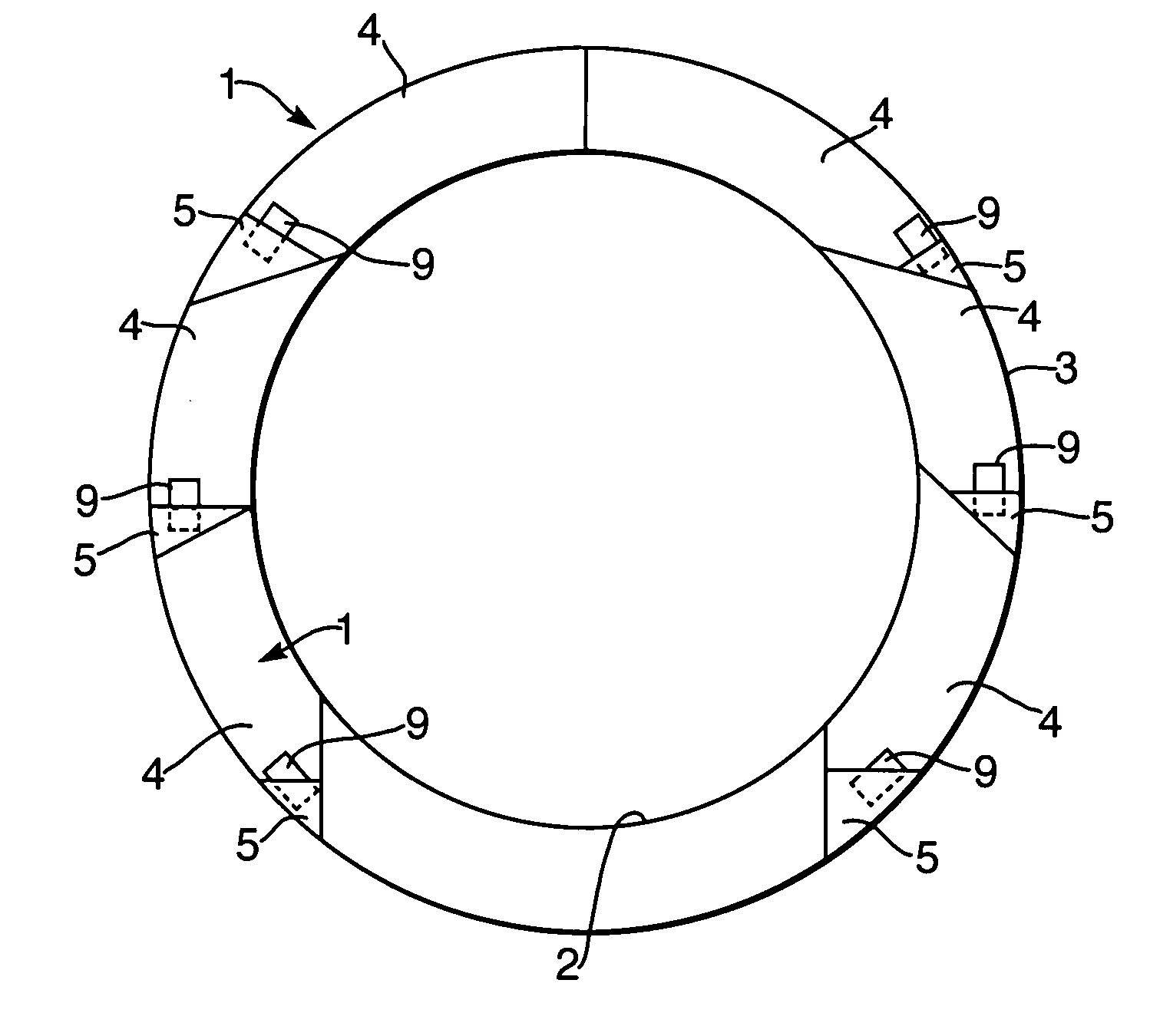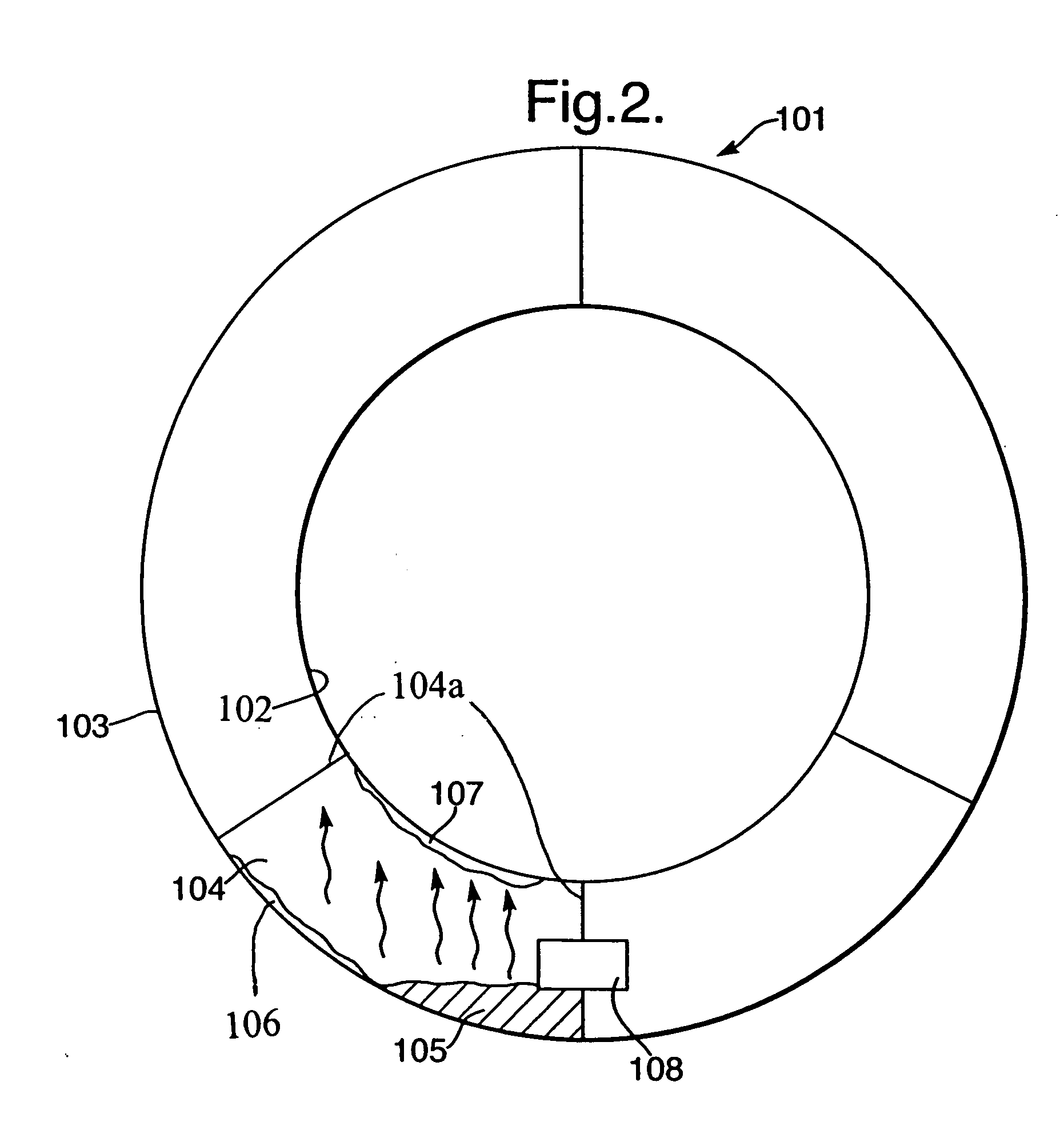Engine cooling
- Summary
- Abstract
- Description
- Claims
- Application Information
AI Technical Summary
Benefits of technology
Problems solved by technology
Method used
Image
Examples
Embodiment Construction
[0016]As indicated above, whilst an engine is idling prior to takeoff, there is generally limited cooling airflow and a generally higher ambient ground temperature than at altitude. Nevertheless, there still remains some airflow through a bypass duct generated by the fan of the engine. This airflow is at ground ambient temperature. The present invention utilises a heat transfer process by which an evaporatable liquid is utilised to transfer heat losses from electronic or other devices to a colder surface. A colder surface in this case is either the bypass duct interface or the outer nacelle surface. The gas will condense on the colder surface available (thereby passively switching between available surfaces) and the newly formed liquid will be available for further heat pick up from the heat source, component or part. Additionally, it will be appreciated that an intermediate fuel or other heat exchanger could be used in order to further condense the evaporatable liquid. During flyin...
PUM
 Login to View More
Login to View More Abstract
Description
Claims
Application Information
 Login to View More
Login to View More - R&D
- Intellectual Property
- Life Sciences
- Materials
- Tech Scout
- Unparalleled Data Quality
- Higher Quality Content
- 60% Fewer Hallucinations
Browse by: Latest US Patents, China's latest patents, Technical Efficacy Thesaurus, Application Domain, Technology Topic, Popular Technical Reports.
© 2025 PatSnap. All rights reserved.Legal|Privacy policy|Modern Slavery Act Transparency Statement|Sitemap|About US| Contact US: help@patsnap.com



